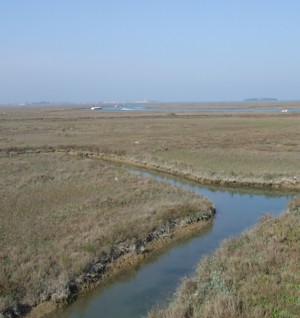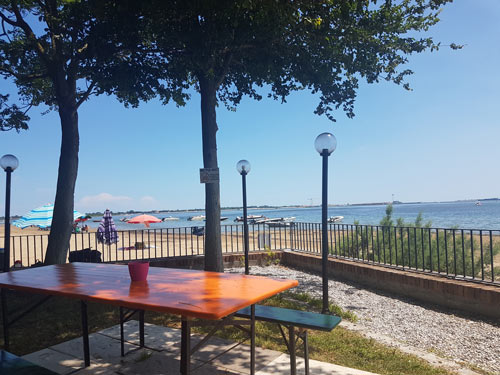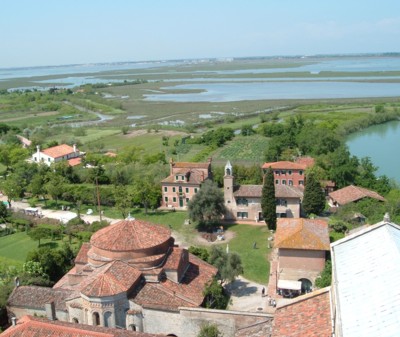The city of Venice itself is an archipelago, made up of lots of tiny islets divided by canals, although it’s a lot simpler to think of the city as one island. Nowadays Venice is pre-eminent among the settlements and mudbanks spread over the wider lagoon. This wasn’t always the case, however, and a couple of the quieter, nearly abandoned islands in the northern lagoon were once important towns themselves.
Exploring the shallow miles of lagoon which stretch around Venice, dotted with islands, is an instructive as well as enjoyable experience. Both the history of these islands and the nature of the lagoon come to life as your boat chugs away from the distracting palaces and belltowers of Venice.
The first thing you will notice is the route taken by your ferry. The Venetian lagoon is very shallow, sometimes mostly water, sometimes half mud, depending on the state of the tide. Deeper canals run between the mudbanks, marked with bricole, wooden poles lashed together, emerging from the water. Boats must stick to these canals to avoid running aground – if you travel at low tide, when massive expanses of mudbank are exposed just yards from the bricole, you’ll realise how great that risk is. Locals who go out in small boats will tell you of the times they’ve had to get out and push their boat clear of the mud.

Some of the guidebooks flatter their readers by suggesting that anyone who heads out into the lagoon is a pioneer, escaping the tourist hordes. Well, that’s not entirely the case. The boats ploughing across to Murano are often painfully packed with camera-wielding sightseers, and there is sometimes rather a mob surrounding the Torcello boat stop on Burano. But it is still true that the majority of visitors don’t make it this far. Murano is an obvious stop, publicised by touts around every hotel. But numbers dwindle as you get further away from Venice, and the only tourists who arrive in Torcello are those with a genuine interest in seeing Torcello.
There are also islands around the lagoon which are very nearly tourist-free; although they can be reached by public boat services. These are the places to come if you’re fed up of being jostled at every turn in Venice’s lanes or if you want to see the lagoon and lagoon life as it has evolved over the centuries. Or if you just fancy a boat trip and a picnic.

Murano, Burano and Torcello are the traditional tourist destinations among the islands. They are all very different in character and worth visiting if you’re in Venice more than a day or two. Mazzorbo is joined to Burano by a bridge and makes a good extra to a trip in this direction. These islands all are – or were – busy communities. The Venetian lagoon’s smaller islands often had more specific functions, from gunpowder stores to lunatic asylums. San Michele, a short ferry-ride from Venice, is the city’s cemetery. Several other islands housed monastic communities, and two continue to do so. It’s hard to visit these small islands without your own boat, but there are two which are accessible by public ferry services and which can be visited at certain times on guided tours. These are Lazzaretto Nuovo, which was once a quarantine island, and San Lazzaro degli Armeni, an Armenian monastery. For something very different, and off the beaten track, visitors can take the hourly ferry to Sant’Erasmo, the largest island in the lagoon, which is agricultural and produces much of the fresh fruit and vegetables sold in Venice.
Lagoon islands
> Murano – renowned glass-making centre.
> Burano – famous for its colourful painted houses.
> Torcello – evocative and abandoned.
> San Michele – the island which serves as Venice’s cemetery.
> Mazzorbo – a sleepy rural backwater alongside Burano.
> Lazzaretto Nuovo – former quarantine island; tours at weekends.
> Sant’Erasmo – agricultural outpost with pleasant strolls along lagoon shore.
> San Lazzaro degli Armeni – Armenian monastery island beloved of Byron.
> Le Vignole – smaller agricultural cousin to Sant’Erasmo.
It doesn’t fit in with trips to the northern islands, but the fishing town of Chioggia is also technically an island within the Venetian lagoon.
